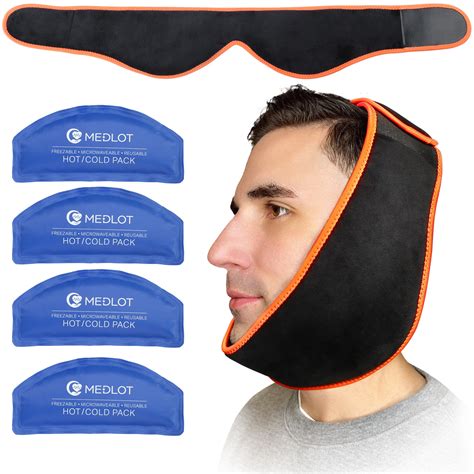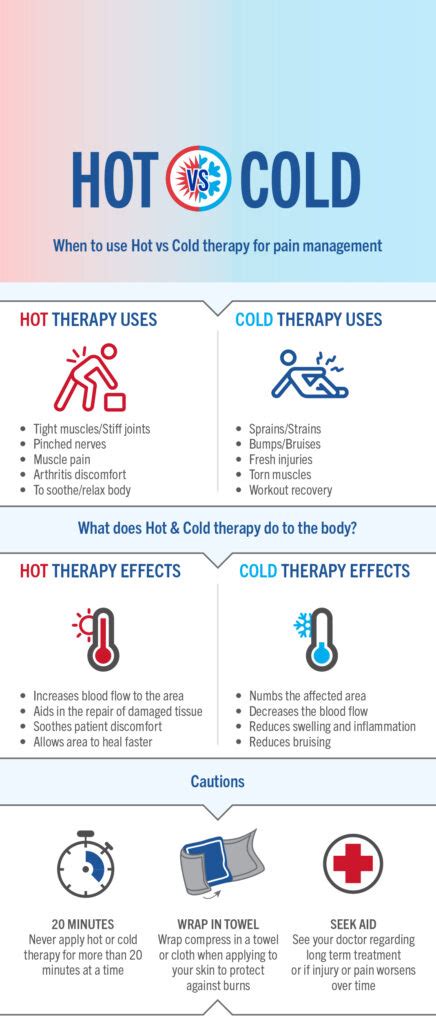Intro
Discover the benefits of Hot Cold Therapy, a non-invasive pain relief method using temperature therapy, cryotherapy, and thermotherapy to reduce inflammation and soothe muscle tension, promoting healing and relaxation.
The use of hot and cold therapy has been a staple in the treatment of various ailments for centuries. From ancient civilizations to modern times, the application of temperature extremes has been used to alleviate pain, reduce inflammation, and promote healing. Whether you're an athlete looking to recover from a grueling workout or an individual seeking relief from chronic pain, hot and cold therapy can be a valuable addition to your treatment regimen. In this article, we'll delve into the world of hot and cold therapy, exploring its benefits, mechanisms, and practical applications.
The importance of hot and cold therapy cannot be overstated. By manipulating temperature, individuals can tap into the body's natural healing processes, promoting relaxation, reducing muscle spasms, and increasing blood flow. Hot therapy, in particular, is renowned for its ability to relax muscles, increase flexibility, and reduce stiffness. On the other hand, cold therapy is often used to reduce inflammation, numb pain, and promote vasoconstriction. By understanding the unique benefits of each, individuals can harness the power of temperature to take control of their health and wellbeing.
As we explore the realm of hot and cold therapy, it's essential to recognize the intricate mechanisms at play. The human body is equipped with an impressive array of thermoreceptors, specialized nerve endings that detect changes in temperature. When exposed to hot or cold stimuli, these receptors trigger a cascade of physiological responses, influencing blood flow, heart rate, and even the release of certain neurotransmitters. By leveraging this complex interplay, hot and cold therapy can be tailored to address a wide range of conditions, from acute injuries to chronic diseases.
Benefits of Hot Therapy

Types of Hot Therapy
Hot therapy can take many forms, including warm baths, saunas, heat wraps, and electric blankets. Each type of hot therapy has its unique benefits and applications, making it essential to choose the most suitable option for your specific needs. Some popular types of hot therapy include: * Warm water therapy: Soaking in a warm bath or pool to relax muscles and promote relaxation * Sauna therapy: Exposure to dry heat to stimulate sweating and detoxification * Heat wrap therapy: Applying a warm compress or wrap to a specific area to reduce pain and inflammation * Electric blanket therapy: Using an electric blanket to apply gentle heat to the bodyBenefits of Cold Therapy

Types of Cold Therapy
Cold therapy can take many forms, including ice packs, cold compresses, and cryotherapy chambers. Each type of cold therapy has its unique benefits and applications, making it essential to choose the most suitable option for your specific needs. Some popular types of cold therapy include: * Ice pack therapy: Applying an ice pack to a specific area to reduce pain and inflammation * Cold compress therapy: Using a cold, wet compress to reduce swelling and promote vasoconstriction * Cryotherapy chamber therapy: Exposure to extremely cold temperatures to stimulate physiological responsesPractical Applications of Hot and Cold Therapy

Steps for Implementing Hot and Cold Therapy
Implementing hot and cold therapy can be straightforward, but it's essential to follow some basic steps to ensure safety and effectiveness. Some steps to consider include: * Consulting with a healthcare professional to determine the most suitable type of therapy for your specific needs * Starting with gentle temperatures and gradually increasing or decreasing as needed * Monitoring your body's response to therapy and adjusting as necessary * Combining hot and cold therapy with other treatments, such as exercise or meditation, for enhanced benefitsConclusion and Future Directions

What is the difference between hot and cold therapy?
+Hot therapy is used to relax muscles, increase flexibility, and reduce stiffness, while cold therapy is used to reduce inflammation, numb pain, and promote vasoconstriction.
How do I choose the right type of hot or cold therapy for my needs?
+Consult with a healthcare professional to determine the most suitable type of therapy for your specific needs, and consider factors such as the location and severity of pain, as well as any underlying medical conditions.
Can I use hot and cold therapy in combination with other treatments?
+Yes, hot and cold therapy can be combined with other treatments, such as exercise, meditation, or medication, to enhance benefits and promote overall wellbeing.
We hope this article has provided you with a comprehensive understanding of hot and cold therapy, its benefits, and its practical applications. Whether you're seeking relief from chronic pain or looking to optimize athletic performance, we encourage you to explore the world of temperature therapy and discover the benefits for yourself. Share your thoughts and experiences with hot and cold therapy in the comments below, and don't forget to share this article with friends and family who may benefit from this valuable information.
